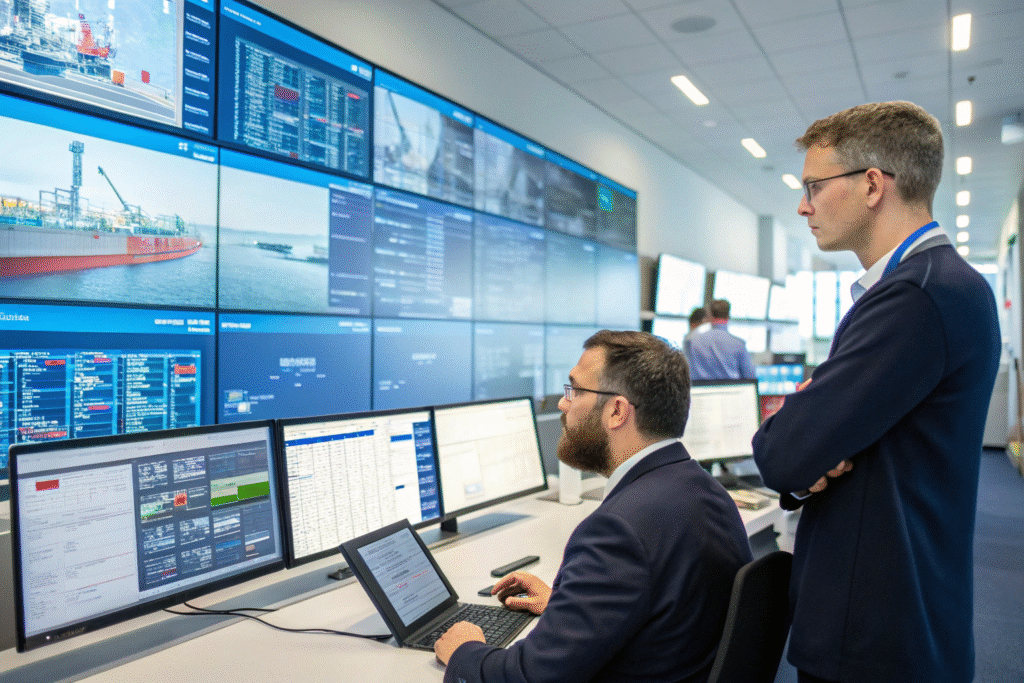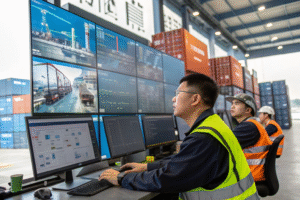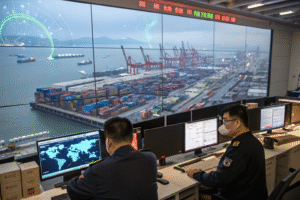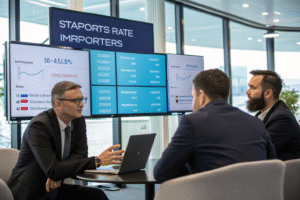The China-US trade relationship stands at a critical juncture, with importers facing unprecedented uncertainty about future sourcing strategies. Geopolitical tensions, shifting trade policies, and supply chain realignments are creating both challenges and opportunities. Many businesses feel caught between the cost advantages of Chinese manufacturing and the increasing risks of dependency on a single sourcing region.
The future of China-US trade will likely involve continued strategic decoupling in critical sectors, higher compliance costs, but ongoing opportunities for non-strategic consumer goods. Successful importers will need to adopt hybrid sourcing strategies, enhance supply chain visibility, and build greater flexibility into their operations to navigate the evolving trade landscape.
Let's examine the key trends shaping China-US trade and how forward-thinking importers can position themselves for success in this new environment.
How are geopolitical factors reshaping trade flows?
Geopolitical considerations increasingly influence trade patterns in ways that extend beyond traditional economic factors. National security concerns, technology competition, and strategic autonomy objectives are driving policy decisions that directly impact importers' sourcing options.
We're observing accelerated decoupling in semiconductors, telecommunications equipment, green technology, and other sectors deemed strategically important. Meanwhile, consumer goods like apparel, furniture, and household products continue to flow but with increased scrutiny and potential tariff pressures. The key trend involves "de-risking" rather than complete decoupling, with businesses maintaining Chinese sourcing for non-critical categories while diversifying strategic components. This nuanced approach recognizes China's manufacturing strengths while addressing supply chain vulnerability concerns.

Which industries face the most significant changes?
Strategic sectors experiencing major transformation include:
- Electronics and technology facing export controls and heightened scrutiny
- Renewable energy components subject to domestic production incentives
- Pharmaceutical ingredients undergoing supply chain reshoring efforts
- Advanced manufacturing equipment affected by technology transfer concerns
- Critical minerals targeted for supply chain diversification
Importers in these sectors should expect continued disruption and plan accordingly.
How is "de-risking" different from decoupling?
De-risking represents a more nuanced approach that:
- Maintains commercial relationships in non-strategic areas
- Diversifies rather than eliminates Chinese sourcing
- Focuses on supply chain resilience rather than complete separation
- Recognizes economic realities of China's manufacturing capabilities
- Adapts to specific product characteristics rather than applying blanket approaches
This strategic differentiation helps importers make more targeted sourcing decisions.
What sourcing strategies will prove most effective?
Future success will belong to importers who develop sophisticated, flexible sourcing approaches rather than relying on single-country or single-supplier models. The companies thriving in this new environment are those building resilient, multi-geography supply chains while maintaining cost competitiveness.
The most effective strategies involve China-plus-one sourcing approaches, regional manufacturing hubs development, near-shoring opportunities exploration, and supply chain digitization for enhanced visibility. Successful importers treat their sourcing strategy as a dynamic portfolio requiring continuous optimization rather than a static arrangement. This approach balances cost, risk, and flexibility to create sustainable competitive advantage.

How does the China-plus-one model work in practice?
Effective China-plus-one implementation involves:
- Maintaining Chinese suppliers for cost-effective base production
- Developing alternative sources in Southeast Asia or elsewhere for redundancy
- Splitting production between locations based on risk assessment
- Building supplier capability across multiple geographies
- Managing increased complexity through technology and expertise
This approach provides insurance against disruptions while preserving cost advantages.
What regions are benefiting from trade diversification?
Several regions are experiencing increased interest as alternatives:
- Vietnam for electronics, textiles, and furniture
- Mexico for near-shoring to the US market
- India for various manufacturing categories
- Eastern Europe for European-bound goods
- Southeast Asian countries like Thailand and Malaysia
Each region offers different advantages depending on product type and destination market.
How will compliance requirements evolve?
The regulatory environment for China-US trade is becoming increasingly complex, with more documentation requirements, heightened enforcement, and evolving standards. Importers should prepare for greater compliance burdens and the need for more sophisticated regulatory management.
We anticipate continued focus on forced labor enforcement through the Uyghur Forced Labor Prevention Act, increased customs scrutiny of valuation and classification, more rigorous origin verification requirements, and potential expansion of tariff measures. Successful importers will need to invest in compliance expertise, technology systems, and documentation processes to navigate this challenging environment efficiently.

What forced labor compliance measures should importers implement?
Comprehensive forced labor compliance requires:
- Supply chain mapping to raw material level for high-risk sectors
- Due diligence documentation demonstrating reasonable care
- Supplier certification processes with verification mechanisms
- Internal control systems for ongoing compliance monitoring
- Remediation protocols for addressing identified issues
These measures are becoming standard requirements rather than optional best practices.
How might tariff structures change?
Potential tariff developments include:
- Section 301 tariff modifications on specific product categories
- Generalized System of Preferences reviews affecting eligibility
- Trade agreement developments creating new preferential options
- Countervailing duties addressing perceived unfair trade practices
- Seasonal or temporary adjustments responding to economic conditions
Importers should build flexibility into their cost structures to accommodate these potential changes.
What role will technology play in future trade operations?
Technology will become increasingly crucial for managing the complexity of modern China-US trade relationships. Digital tools can help importers maintain visibility across diversified supply chains, ensure compliance with evolving regulations, and optimize constantly changing trade parameters.
Key technological capabilities include supply chain visibility platforms, digital documentation management, compliance automation systems, predictive analytics for risk assessment, and supplier management tools. The importers leveraging these technologies most effectively will gain significant advantages in cost management, risk mitigation, and operational efficiency as trade relationships evolve.

How can technology enhance supply chain resilience?
Digital transformation supports resilience through:
- Real-time visibility across multiple sourcing locations
- Predictive analytics identifying potential disruptions earlier
- Automated compliance checks preventing regulatory issues
- Digital twin capabilities modeling alternative scenarios
- Integrated communication platforms coordinating response actions
These technological capabilities transform supply chain management from reactive to proactive.
What data management capabilities will prove most valuable?
Critical data capabilities include:
- Unified data platforms integrating information from multiple sources
- Advanced analytics deriving insights from trade data patterns
- Automated documentation reducing errors and delays
- Compliance databases tracking regulatory changes
- Performance dashboards monitoring supplier and logistics performance
Investments in these areas yield significant returns as trade complexity increases.
Conclusion
The future of China-US trade will require importers to become more sophisticated, flexible, and strategic in their approaches. While challenges around tariffs, compliance, and geopolitical tensions will continue, opportunities exist for businesses that can navigate this complex landscape effectively. The most successful importers will be those who develop diversified sourcing strategies, invest in compliance capabilities, leverage technology for visibility and efficiency, and maintain the agility to adapt as the trade environment evolves. By taking proactive steps today, businesses can position themselves to thrive in whatever future emerges for China-US trade relationships.









